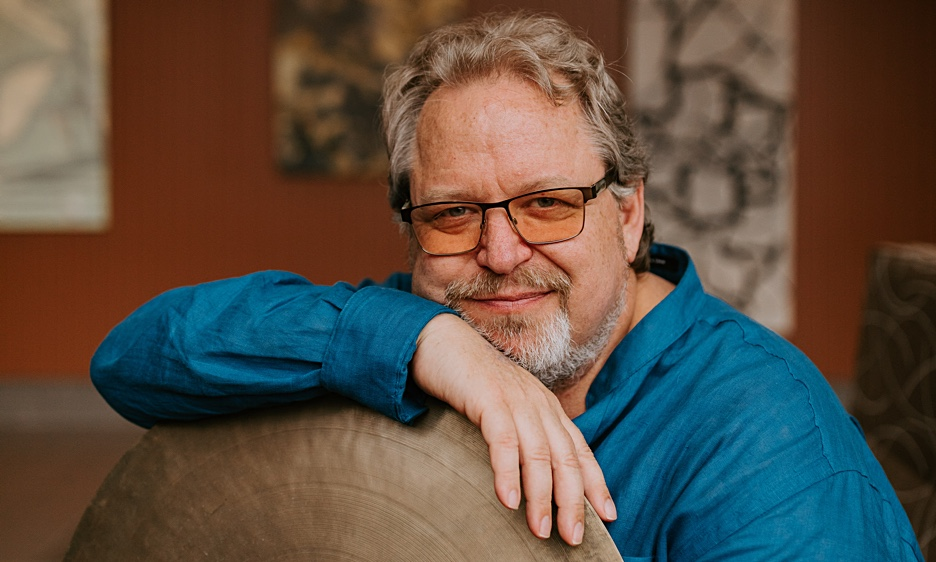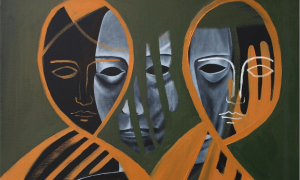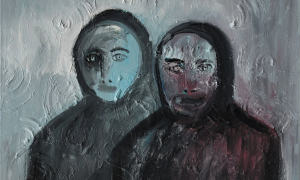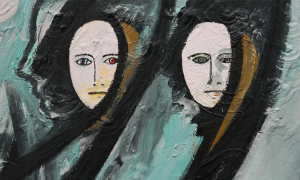Home » Jazz Articles » Jazz in Long Form » Introducing Jazz History And Literature, Reconceived
Introducing Jazz History And Literature, Reconceived

Philly, babe, this approach of yours is unique and important, a new way of introducing the music. I'm telling you, I don't know of anyone who thought of teaching 'the music' this way.
—Dave Liebman, NEA Jazz Master
Being a Bachelor of Music 'jazz major' in the early 1980s was fortuitous (Coe College, Cedar Rapids, IA), as studying with Dr. Paul Smoker—the maverick modern trumpet innovator and educator—soon proved. Smoker was one of the early pioneering DMA holders who successfully integrated "street learning" values, experience, and tradition into his academic programs. Even as I earned my undergraduate degree and contemplated further studies, Smoker reminded me that "if what you really want to learn is how to play at the world level, you likely won't do that in any school. Instead, go to New York and play with Miles Davis and his generation, if you can. If not, then find a way to play with some of Miles' living sidemen, because that's how it is done."
By then, I knew that if I was to have anything worth teaching, it could never have enough impact if I couldn't actually "walk the talk." My other influential teachers of the time (Ed Blackwell, JoAnne Brackeen, Anthony Braxton, Jack DeJohnette, Dave Holland, Lee Konitz, Dave Liebman, and Kenny Wheeler) each imparted invaluable personal lessons to me that, with the exception of Liebman's various publications, are not readily available. Hence, I decided to capture the trans-African cultural majesty, magic, and essence of jazz—an art form which had evolved from a long lineage of aural and oral tradition—upon the shoulders of what I had learned from academia, my own explorations, including the aural/oral 'street' tradition.
As NEA Jazz Master Dave Liebman noted several years ago, "Philly, babe, this approach of yours is unique and important, a new way of introducing the music. I'm telling you, I don't know of anyone who thought of teaching 'the music' this way. 'Sky's the limit, bro."
Introducing Classic and Modern Jazz History & Literature
In addition to anchoring this course sequence with copies of primary sources (recordings, interviews, film and television clips, autobiographical works, scores, pictures, etc.), I integrated Richard Lawn's Experiencing Jazz [Routledge, 2013] as an approachable listening volume as our text. To expand upon the sample recordings referenced by Lawn, a Bucknell University grant that I was awarded established the backbone of our library's then limited jazz holdings—initially acquiring somewhat more than 100 important CD and CD sets, plus another 150 some CD and box-set recordings loaned from my personal library and those of other faculty—each of which were soon digitized, liner notes and all, and streamed for ease of student access.I.
Introduction to Modern Jazz (1958—present): Sans any traditional textbook, I began the semester with a 2.5 week examination of John Coltrane (reading J.C. Thomas' approachable and informative Chasin' The 'Trane [Da Capo Press, 1976]) built around classic Coltrane recordings followed by:- 2.5 weeks of Miles Davis recordings (reading significant sections of Miles: The Autobiography [Picador, 1990])
- 2 weeks of Ornette Coleman original works, utilizing student-researched interviews with Coleman and his collaborators, and
- 2 weeks of Anthony Braxton, reading Graham Locke's Forces In Motion: The Music And Thoughts Of Anthony Braxton(Da Capo Press, 1989) blending multiple collaborative recordings made with Dave Holland, Chick Corea, Kenny Wheeler, etc., with his own releases, including samples from his solo alto saxophone work.
- Intro—4 measures rhythm section vamp + 4 more w/riffing horns
- Inhead—Miles Davis led theme (A12 + 4 riffing interlude, A12 + 4 riffing interlude)
- Davis' trumpet solo—4 twelve measure choruses of modern minor blues (A12, A12, A12, A12 + 4 bar interlude vamp)
- Cannonball Adderley's alto solo—another 4 choruses of modern minor blues (A12, A12, A12, A12 + 4 bar interlude vamp)
- John Coltrane's tenor solo—another 4 choruses of modern minor blues (A12, A12, A12, A12 + 4 bar interlude vamp)
- Bill Evans' piano solo—2 choruses of modern minor blues (A12, A12 + 4 bar interlude vamp)
- Out head—Davis-led A12 theme + 4 riffing horns, repeated to Davis' improv over fading rhythm section last chorus to end (around measure 10)
- Listening with others (as a group) is often far more conducive to the "excitement of discovery" rather than strictly solitary listening,
- Listening by oneself, however, allows personal impressions, questions, values, conclusions, etc., to have enough time to manifest—which is crucial—just as any artist generates their own unique worldview, taste, and expression,
- Quick recognition and associations, after hearing a few phrases or sections of recorded music, is analogous to the essentially instantaneous recognition jazz performers must attain for their collaborator's rhythms, harmonic implications, ensemble intent, intonation, mood, abstraction, dynamic trajectory, etc.,
- Rehearsing and preparing diverse eras and idioms simultaneously, as opposed to first "mastering" bebop before being allowed to 'graduate' to modal approaches, or "Giant Steps" changes and the like, actually accelerated student growth and more closely mirrored real-world professional experience among working musicians,
- "Serious fun"' environments are vital to growth, exploration, trust, learning, sensitivity, and expression,
- "Practice performing," versus "rehearsal practice," is what all professionals bring to any productive gathering,
- Developing personal intuition and pre/subconscious processing are under-emphasized in academia, despite the fact that working toward 'being in the zone' is teachable, and often key to many achievement breakthroughs—as in so-called 'Ah-ha!' moments, when 'the lights' suddenly turn on.
- Weekly, hand graded & commented upon PLJ plus reading homework,
- Encouraged group study for arrangement mapping, researching credits, and sharing analysis,
- Students arriving the first day of class having already prepared a review of a favorite artist to share,
- An informal yet professional serious fun collaborative classroom environment—the very same informal rehearsal and session environment I found common in NYC and worldwide),
- Great music's inherent vibrant, impressive, transformational, soulful, human magic and artful emotion,
- Frequent class conversations regarding historical context (historic events defining each decade of which they should have previously studied, or at least heard about, in other coursework and life experiences),
- My utter confidence and buoyant manifest support for every class, and each member therein, expecting that they could and would all succeed, to simply "trust in Phil" and our process while engaged in their explorations,
- A clear and openly shared passion for the material and love for jazz culture resourcefulness,
- A most helpful grading formula & rubric which weighted homework significantly (see below).
- 20% Homework (PLJ's + reading notes)
- 20% four live concert reviews (post re-drafting w/my proposed revisions)
- 20% four to six 30-minute quizzes
- 20% Mid-term + Final combined exam average
- 20% class participation & attendance
- Free Write: FUN, PERSONAL NARRATIVE—GO!!!
- Create an appropriate basic Arrangement Outline for this Coltrane work
- Include: tempo, style & meter (as a map "legend")
- Utilize "Musical GPS" to describe a pivotal aesthetic moment in your selection
- Free Write: FUN, PERSONAL NARRATIVE—GO!!!
- Create an appropriate basic Arrangement Outline for this Coleman work, including tempo, style, & meter, etc.
- Utilize "Musical GPS" to describe a pivotal aesthetic moment in your selection.
- Paraphrase a favorite Miles Davis quote & illuminate its impact on you and our arts culture at large.
- Name a favorite contemporary performer who has clearly been influenced by either Ornette Coleman, John Coltrane, Miles Davis, or Anthony Braxton, then detail several of the connections you hear between them.
- Identify three diverse pieces you would use to introduce a friend to modern jazz, then illuminate what makes your selections potentially so useful in exciting the uninitiated.
Once these opening nine weeks of Modern Jazz had been digested, so as to "eat our vegetables first," we then continued our semester with multiple weeks of so-called Open Forum, where students selected their own artists to review and present, then voted as a class to select which artists and recordings would become common listening for course evaluation. To each of our Open Forum weeks, I generally would add three or more contrasting artist recordings, beyond what classes had voted upon, in order to broaden and balance our collective listening experience.
II.
For each course (Classic Jazz each fall and Modern Jazz each spring), I devised a Personal Listening Journal (PLJ) homework assignment format that could be customized by each student as a kind of pivot point between out-of-class preparation and in-class group study and discussion. PLJ's consisted of at least five discrete strategies of engagement for all required class listening:A "Free Writing" inspired by the album title, and then the particular composition's title, began each journal. Once done, students were instructed to continue free writing—chronicling one's day-dream-like first impressions while listening to the prescribed musical selection, in real-time, as the recording first played. Goal: capturing student intuition and imagination—what they authentically felt/sensed.
After Free Writing, participants were encouraged to loop and listen several times to the selection, now more as background music, while researching and noting recording dates, release dates, record labels, catalog numbers, personnel, instrumentation, producer, etc. Goal: to both internalize passively each musical selection, build their research skills, and to create their own 'Credits'—notes for quick reference.
"Arrangement Outline" mapping required students to listen, hear, recognize, and use concise notation to communicate the chronological sequence of events for each selection—without reference to digital timings—just as they would if mapping for a live performance review. For example, Miles Davis' "All Blues," from Kind of Blue (Columbia, 1959), could be notated as:
Medium swinging "cool jazz"
"Considered Writes" (a concise analysis & critique) took the form of composing a one-to-three paragraph mini-review for each performance. I modeled for students how to incorporate one or two of their most distinctive and vivid free write images via "Jazz GPS" integrating location descriptions from their Arrangement Outline, such as:
"After the introduction, beginning in measure 3 of the In-head, Davis responds to Shorter's lonesome statement with an ascending phrase from his harmon-muted trumpet, reminding me of . . . [insert Free Write imagery] I'd then encourage students to describe the most and/or least affecting part of the performance (while specifying individual players, instruments, imagery, descriptions, 'GPS' positioning, etc.), as well as who they would recommend the recording to (which audiences may be interested) and illustrating whether the artist's title imagery had been helpful; compared/contrasted to other recordings they had experienced. Finally, I asked them to cite and incorporate a quote from their text, class, or other attributable source, and concisely illuminate its relevance.
III.
One of the first thoughts shared with all my classes:"I cannot teach you anything. You teach yourselves. I am here to expose you to the best information, learning methods, and performances in our field, as well as to help each of you individually—no matter which pathways you learn with most comfortably—to discover and refine more efficient ways to capture 'deep learning' comprehension and recall."
Oddly, this notion of reversing the roles of who the teacher is and what it is to be a teacher, surprised the majority of students, and yet it is one of the most fundamental conceptual perspectives they must adopt for their lives, in and out of academia. Hence, in addition to preparing multiple PLJ's each week, I also asked students to cite and quote "at least three memorable passages" that they found especially noteworthy from our week's readings, then reflect on each and compose a paragraph or so to share with class illuminating their particular fascination and resulting thoughts for each section quoted. I frequently opened class with students sharing such favorite excerpts.
Along with my own graded "snippet" commentary of both student's weekly reading notes and their PLJ's, my approach assured a high level of committed engagement and therefore comprehension, which helped students to retain and recall what each thought was most important and/or revealing—just as artists are attracted to differing aspects of any given performance, thus reinforcing the more oral/aural personally distinctive tradition.
After my first grading of homework, it became evident that if assignments only cited and reviewed "three notable passages or quotes," no matter how well written, they were unlikely to receive more than a "C," equating to average productivity. If they selected and reflected plus wrote well on four or more passages, they might expect a "B" for excellent work, and unless they doubled the minimum number of examples, they could not expect to earn an "A" for outstanding. For those whose grades are a primary motivational force, such standards reinforce productive, in-depth study habits, arming each participant with more awareness and loftier learning aspirations and attainment. As one of my mother's professors noted to her students:
"An 'A' is an indicator of truly outstanding work. If you expect to earn one from me you had better argue something true that wasn't mentioned in class or in your materials."
IV.
My own life experiences, in addition to the formal collegiate courses I took, taught me many things, including:V.
Grouping weekly musical examples by instrument across many stylistic periods (such as female vocalists, male vocalists, trumpet, tenor saxophone, alto saxophone, soprano & baritone saxophone, trombone, piano, bass, guitar, and drums, or arrangers and big bands), supplies fabulous focus while also more closely mimicking the way people typically become acquainted with any new genre—which is all but never chronological. Hence, if a classical radio station were to be focused on "Symphonies," for example, a listener might reasonably expect to hear Mahler, Mozart, Copeland, Beethoven, etc., yet rarely presented in their order of birthdate.Weekly, I had students select their own favorite recording by our featured artists to review for themselves to ultimately share with class—something not assigned class-wide. With LP's and CD's, for instance, I would encourage students to select any other favorite tune from the artist's release, as the performer and/or producer had grouped such a set or concert's worth of works together for a reason. These connections again helped to reinforce aspects of the aural/oral tradition as well as giving students a broader look at a given artist's intent, as well as their specific period of development. Such skills are especially vital to our "down-loading" generation as after the introduction of the LP, fewer and fewer jazz classics were then issued as singles, but rather in multi-tune sequenced formats, sometimes later referred to as "concept albums." Now, downloaders rarely experience a complete LP or CD as the artist originally intended, and thus it is important...
VI.
Because of mandatory 'front loading' all these semester skills, the majority of my first time students clearly felt all but overwhelmed during our initial weeks of each course. Yet, because of many planned for and prescribed variables, student confidence in course learning quickly gained momentum from:VII.
Testing and grading:VIII.
Sample quiz and exam questions utilized the same formats introduced in our homework:Directed Listening
1) Select & identify a class-assigned Anthony Braxton featured work, then utilize "Musical GPS" to illuminate 2 (two) noteworthy moments in the performance.Comp. 23 H From Five Pieces (1975)
2) Select & clearly identify a John Coltrane featured Youtube of your choice not presented in class.
Informed opinion
In Conclusion
Looking back with a decade of hindsight, I would relish teaching these two courses largely 'as is' still today. I continue to receive thanks from former students in diverse professions (let's hear it for a true liberal arts experience!) still excited by what they learned. They express not only an enduring fascination with jazz, but more vitally a continuing reliance on primary sources, efficient study habits (both personal & community based). They also demonstrate critical thinking skills and a willingness to engage through lively peer discussion, all activities designed for long-term/deep retention. Moreover, YouTube affords readily available listening to everyone with internet access, including many classic full album LPs and CDs, while sources such as All About Jazz offer authoritative archives to many recording personnel, credits, interviews, and reviews. Hence, many educators and their institutions may now choose to sidestep (or to enhance) their library holdings, as their policies and budgets allow. Hear, Hear: some things do get better!Tags
Jazz in Long Form
Kurt Ellenberger
Miles Davis
Ed Blackwell
Joanne Brackeen
anthony braxton
Jack DeJohnette
Dave Holland
Lee Konitz
Dave Liebman
Kenny Wheeler
John Coltrane
Ornette Coleman
Graham Locke
Chick Corea
Bill Evans
PREVIOUS / NEXT
Support All About Jazz
 All About Jazz has been a pillar of jazz since 1995, championing it as an art form and, more importantly, supporting the musicians who make it. Our enduring commitment has made "AAJ" one of the most culturally important websites of its kind, read by hundreds of thousands of fans, musicians and industry figures every month.
All About Jazz has been a pillar of jazz since 1995, championing it as an art form and, more importantly, supporting the musicians who make it. Our enduring commitment has made "AAJ" one of the most culturally important websites of its kind, read by hundreds of thousands of fans, musicians and industry figures every month.





















